10 Best Herbal Creams For Allergies
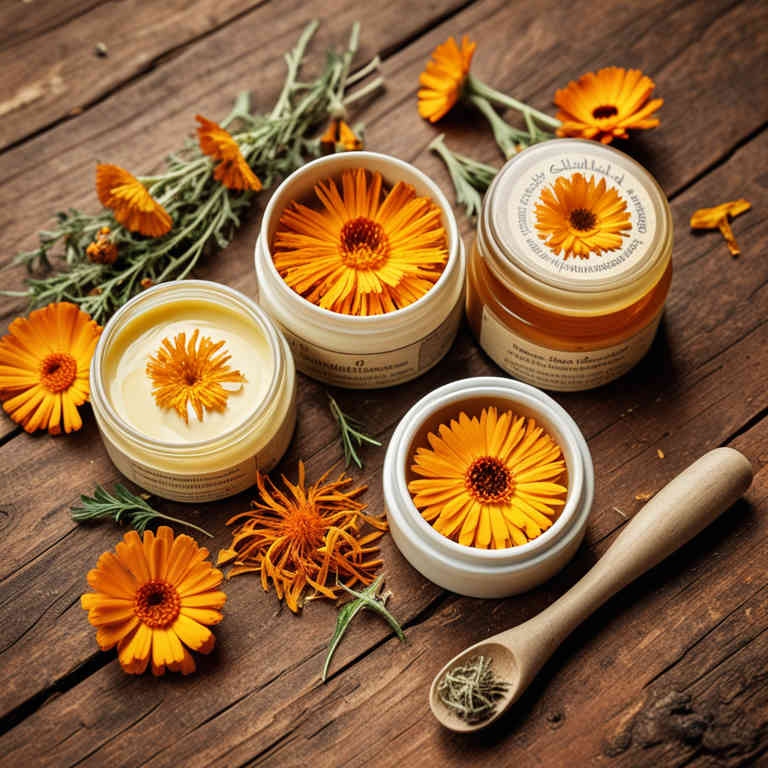
Herbal creams for allergies are natural topical treatments that aim to alleviate symptoms such as redness, itching, and swelling caused by allergic reactions.
These creams often contain plant-based ingredients like chamomile, calendula, and licorice root, which are known for their anti-inflammatory and soothing properties. Unlike traditional corticosteroid creams, herbal alternatives are generally considered safer for long-term use and may reduce the risk of side effects. They are particularly popular among individuals seeking natural remedies and those who prefer to avoid synthetic chemicals.
However, it is important to consult with a healthcare professional before using herbal creams to ensure they are appropriate for your specific condition and do not interact with other medications.
FREE Herb Drying Checklist
How to make sure every batch retains maximum flavor, color, and aroma without the risk of mold or over-drying. Eliminate guesswork and trial-and-error, making herb drying faster, easier, and more efficient every time.
Table of Contents
1. Urtica dioica
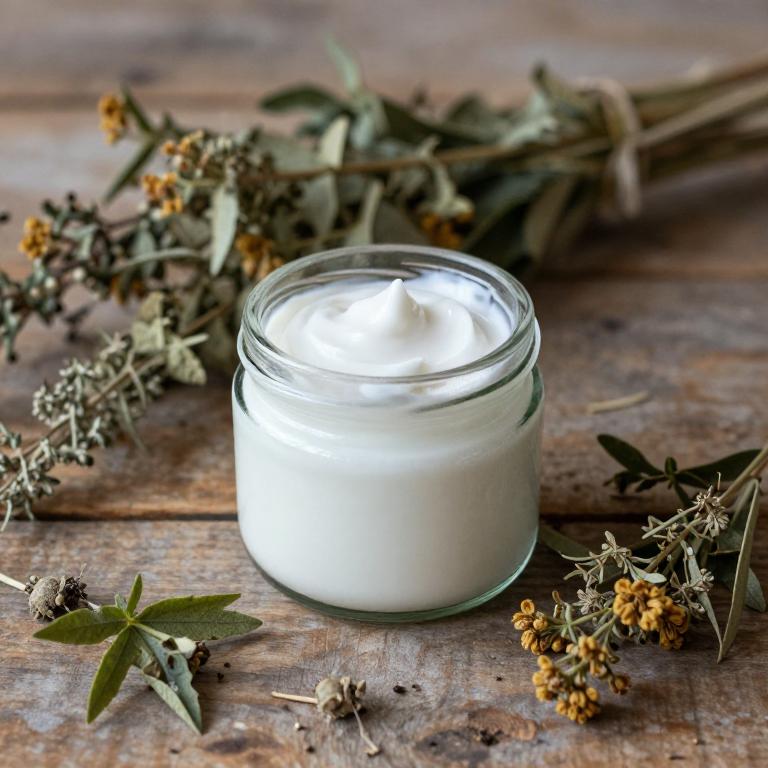
Urtica dioica, commonly known as stinging nettle, has been traditionally used in herbal remedies for its anti-inflammatory and antihistamine properties.
Urtica dioica herbal creams are formulated to alleviate allergy symptoms such as itching, redness, and skin irritation by harnessing the plant's natural compounds. These creams often contain extracts that can help reduce histamine release, making them a natural alternative for managing allergic reactions. They are particularly beneficial for individuals seeking non-steroidal solutions for conditions like eczema or hives.
However, it is important to consult a healthcare professional before use, especially for those with known allergies or sensitive skin.
2. Echinacea purpurea
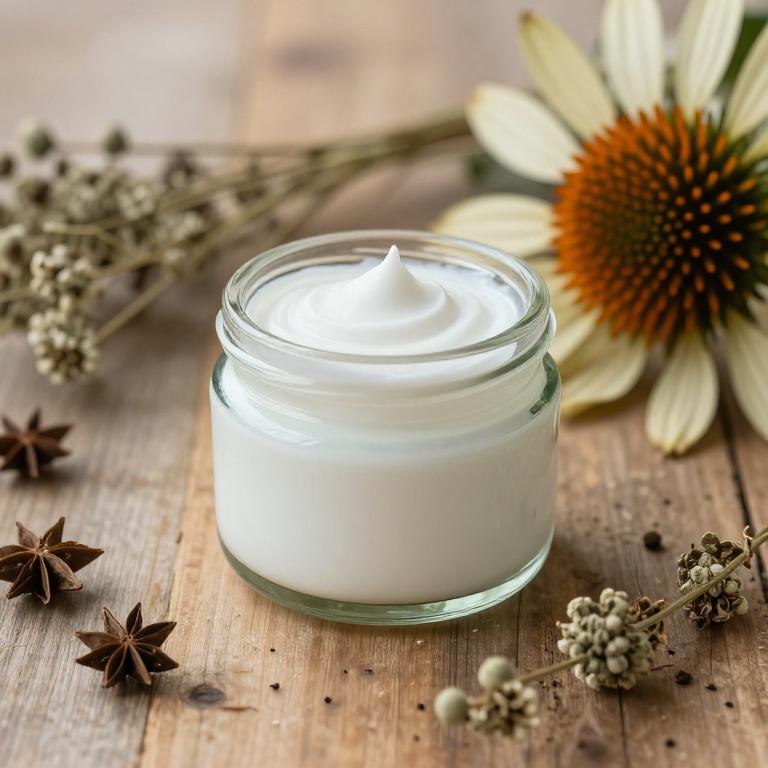
Echinacea purpurea, commonly known as purple coneflower, is a popular herbal remedy often used in the formulation of creams for alleviating allergy symptoms.
These creams typically contain extracts from the plant's flowers and roots, which are believed to have anti-inflammatory and immune-boosting properties. When applied topically, echinacea-based creams may help reduce skin irritation and redness associated with allergic reactions. However, while some studies suggest potential benefits, more research is needed to fully confirm their efficacy for allergy relief.
It is important to consult a healthcare professional before using echinacea creams, especially for individuals with sensitive skin or known allergies to the plant.
3. Matricaria chamomilla
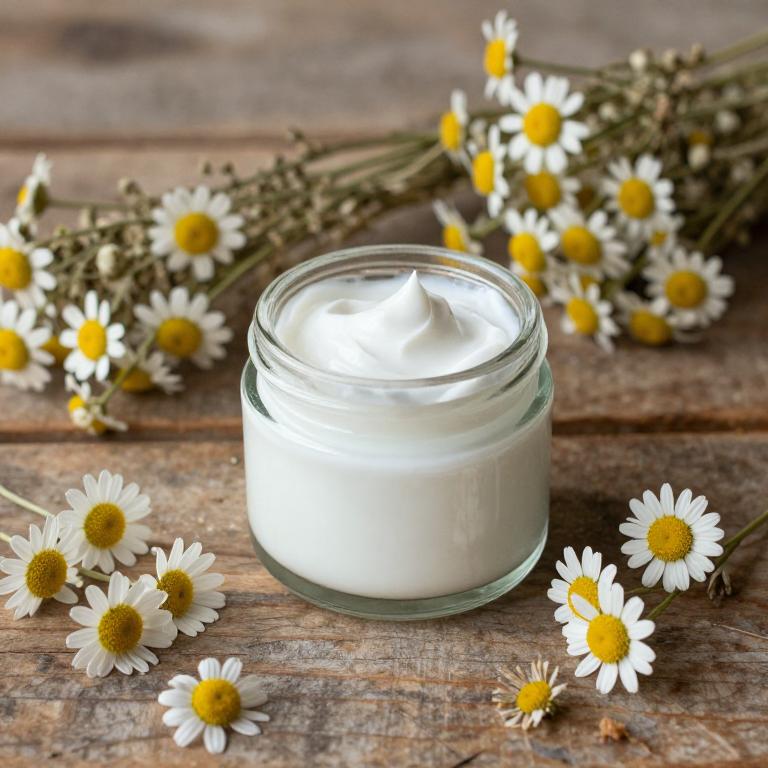
Matricaria chamomilla, commonly known as chamomile, is a popular herbal ingredient used in the formulation of creams designed to alleviate allergy symptoms.
These creams often contain chamomile extract, which is known for its anti-inflammatory and soothing properties. Chamomile-based creams can help reduce skin irritation and redness caused by allergic reactions, making them a natural alternative to conventional treatments. The active compounds in chamomile, such as bisabolol and flavonoids, contribute to its effectiveness in calming sensitive skin.
When applied topically, these creams can provide relief from mild to moderate allergic symptoms without the side effects associated with some pharmaceutical options.
4. Achillea millefolium
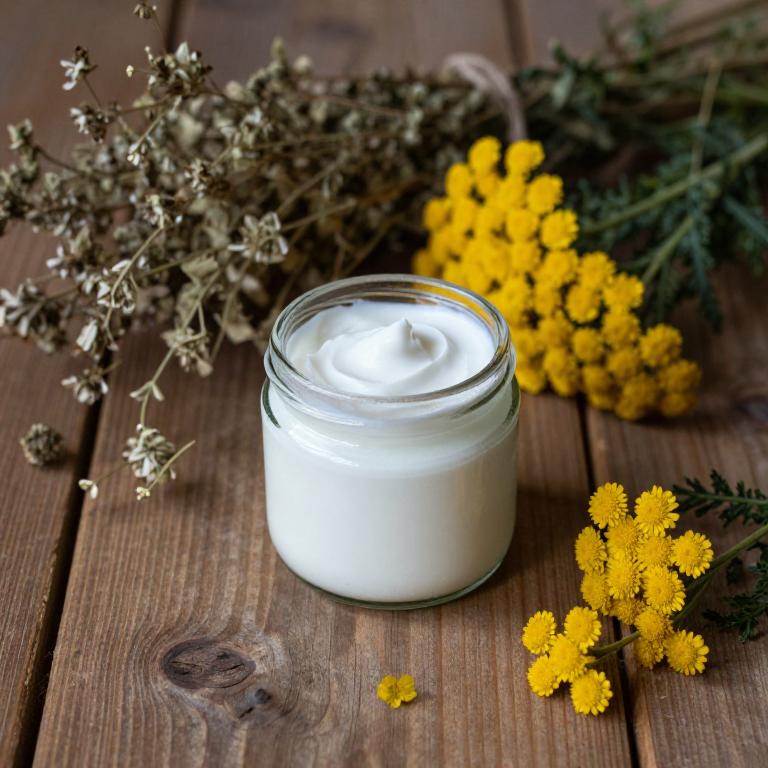
Achillea millefolium, commonly known as yarrow, has been traditionally used in herbal medicine for its anti-inflammatory and antihistamine properties, making it a potential ingredient in herbal creams for allergy relief.
These creams often incorporate yarrow extract to help reduce skin irritation and redness associated with allergic reactions. The plant contains compounds like flavonoids and essential oils that may support the body's natural response to allergens. When applied topically, yarrow-based creams can provide soothing relief to affected areas without the side effects of conventional antihistamines.
However, it is important to consult a healthcare professional before using such products, especially for severe or chronic allergies.
5. Hypericum perforatum
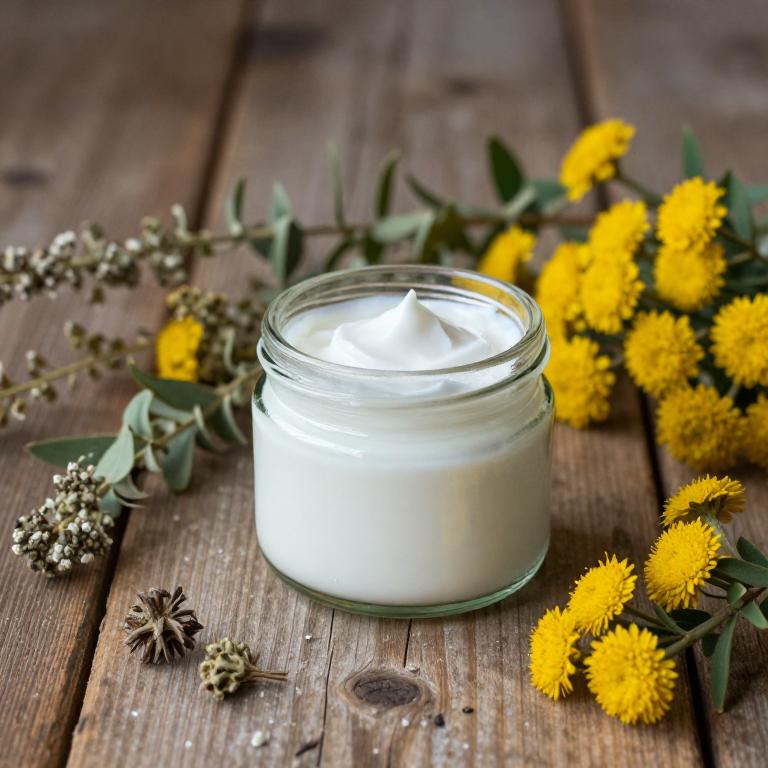
Hypericum perforatum, commonly known as St. John's Wort, is a herbal remedy that has been traditionally used for its anti-inflammatory and antihistamine properties.
When formulated into creams, it can be applied topically to alleviate skin irritation and inflammation associated with allergic reactions. These creams may help reduce redness, swelling, and itching by soothing the affected area. However, it is important to note that while some individuals may find relief from hypericum perforatum creams, they are not a substitute for prescribed allergy medications.
As with any herbal treatment, it is advisable to consult a healthcare professional before use, especially if you are taking other medications, as St. John's Wort can interact with certain drugs.
6. Salvia officinalis
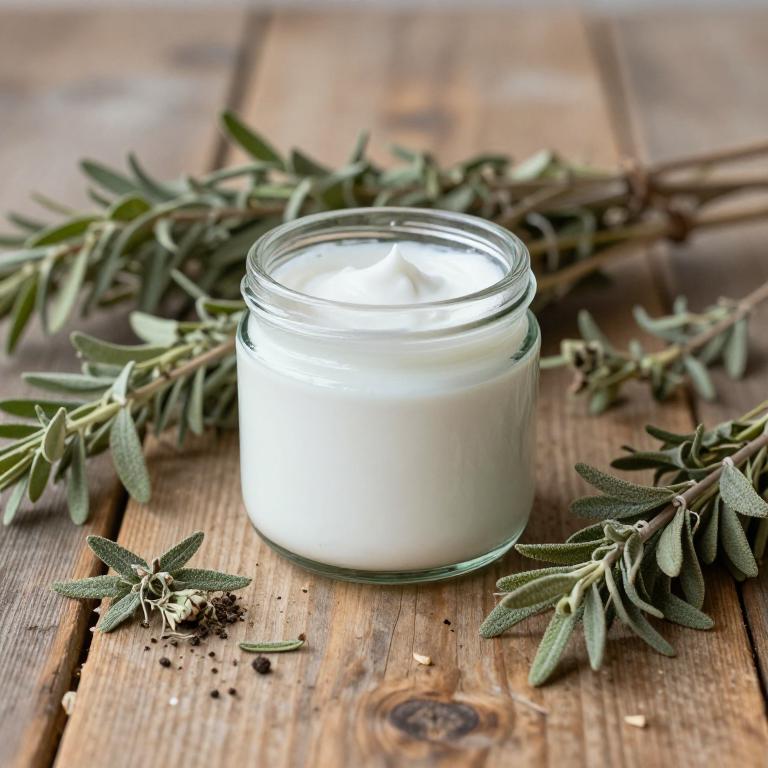
Salvia officinalis, commonly known as sage, has been traditionally used in herbal remedies for its anti-inflammatory and antihistamine properties.
Herbal creams containing salvia officinalis are often formulated to provide relief from allergy symptoms such as redness, itching, and swelling. These creams may help soothe irritated skin caused by allergic reactions due to the presence of essential oils and bioactive compounds like rosmarinic acid. While they are not a cure for allergies, they can serve as a complementary treatment to alleviate discomfort.
However, it is important to consult with a healthcare professional before using any herbal remedies, especially if you have sensitive skin or are taking other medications.
7. Lavandula angustifolia
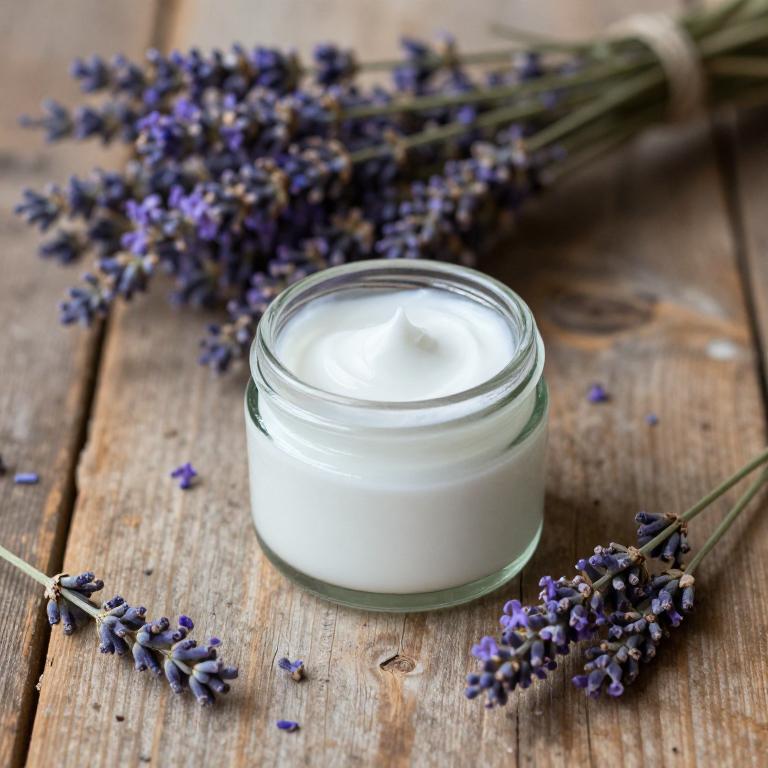
Lavandula angustifolia, commonly known as English lavender, is often incorporated into herbal creams due to its calming and anti-inflammatory properties.
These creams are popular for their ability to soothe skin irritation and reduce redness, which can be beneficial for individuals suffering from allergic reactions. The essential oils in lavender are known to have a mild antihistamine effect, potentially helping to alleviate allergy symptoms when applied topically. Many people find that using lavender-infused creams provides relief from eczema, hives, and other skin conditions associated with allergies.
However, it is important to perform a patch test before use to ensure no adverse reactions occur, especially for those with sensitive skin.
8. Vitex agnus-castus
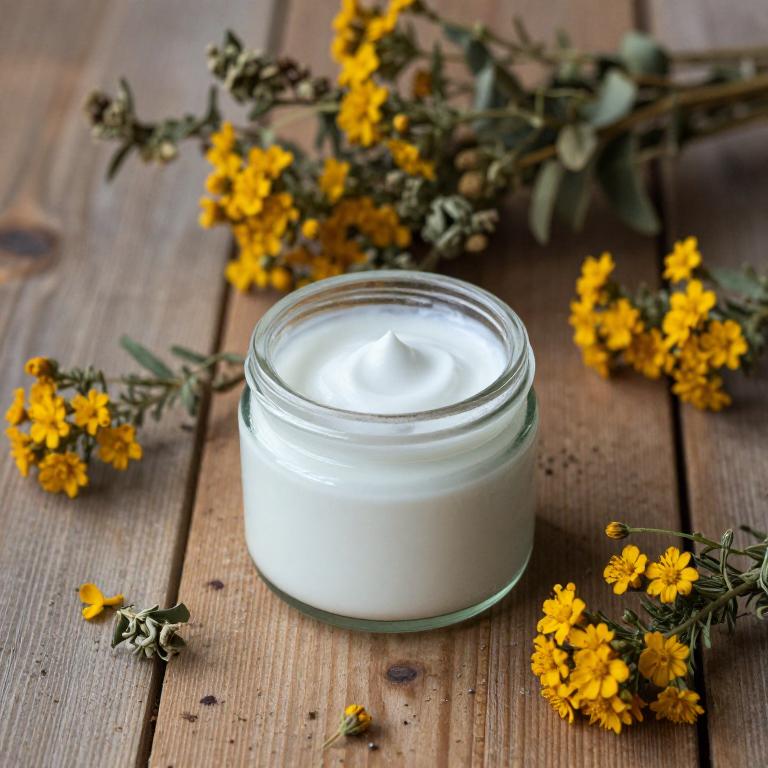
Vitex agnus-castus, commonly known as chaste tree, has been traditionally used in herbal medicine for its potential benefits in managing hormonal imbalances and allergic symptoms.
Herbal creams containing vitex agnus-castus are formulated to provide localized relief from skin irritation and inflammation associated with allergies. These creams often combine vitex with other anti-inflammatory and antihistamine botanicals to enhance their effectiveness. While they are not a substitute for conventional allergy treatments, they may offer a natural alternative for mild allergic reactions.
As with any herbal product, it is important to consult a healthcare professional before use, especially for individuals with known allergies or chronic conditions.
9. Chamomilla recutita
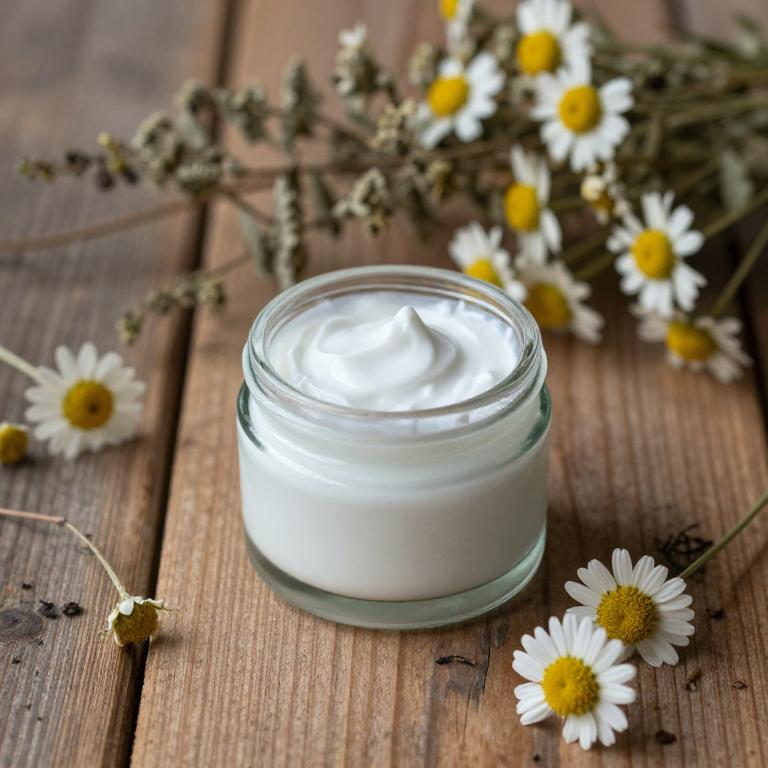
Chamomilla recutita, commonly known as German chamomile, is a popular herbal ingredient used in the formulation of creams for allergy relief.
These creams often contain chamomile extract, which is known for its anti-inflammatory and antihistamine properties. The soothing effects of chamomile can help reduce redness, swelling, and irritation associated with allergic reactions. When applied topically, chamomilla recutita creams may provide natural relief for skin conditions like eczema and hives caused by allergies.
However, it is important to consult a healthcare professional before using these products, especially for individuals with known allergies to plants in the daisy family.
10. Nasturtium officinale

Nasturtium officinale, commonly known as nasturtium, is a flowering plant that has been traditionally used for its potential anti-inflammatory and antimicrobial properties.
Herbal creams infused with nasturtium extract are increasingly being explored for their ability to alleviate symptoms of allergic reactions, such as redness, itching, and inflammation. The active compounds in nasturtium, including flavonoids and essential oils, may help reduce histamine response and soothe irritated skin. While scientific research on its efficacy for allergies is still emerging, many users report positive outcomes when applying these natural creams topically.
As with any herbal remedy, it is advisable to consult a healthcare professional before using nasturtium-based products, especially for severe or chronic allergic conditions.